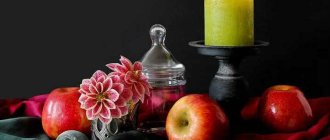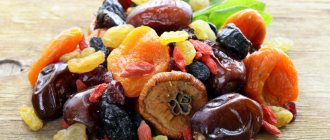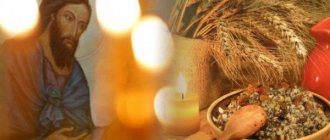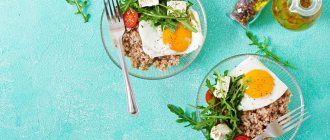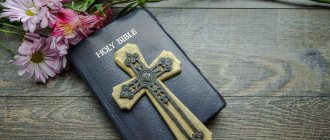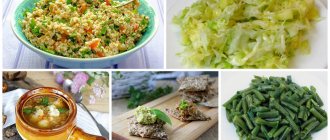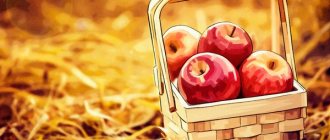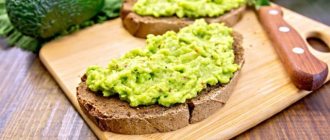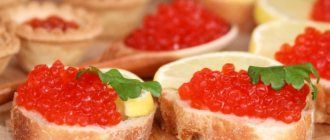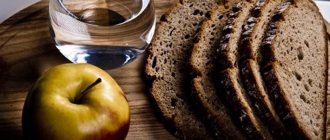Increasingly, believers decide to observe Lent in order to cleanse their soul and body, in order to strengthen their strength of spirit and faith. But not everyone knows that eating during fasting is not a diet or a hunger strike. These are abstinence from worldly goods, in particular from edible goods. What we love so much, what is so difficult to give up - it is precisely abstinence from such pleasures of our body that strengthens the strength of the spirit and helps to cleanse the mind and body of excess, unnecessary things. So, what can you eat during Lent?
By strictly limiting their diet, people get rid of not only extra pounds, but also diseases that arise from excesses. There are official medical studies that have proven that the body, becoming exhausted during fasting, begins to destroy all pathogenic cells (in particular, malignant tumors). The so-called therapeutic fasting.
When does Lent begin in 2021?
The longest and strictest fast does not have a specific start or end date. It lasts seven weeks before Easter. Since the date of Easter varies every year, Lent falls on different dates every year.
According to the 2021 church calendar, Lent begins on March 15. It is preceded by Maslenitsa week - from March 8 to 14. During this period, believers already give up meat, but make up for it by eating plenty of pancakes.
The last day of Lent in 2021 is May 1. And May 2 is Bright Sunday of Christ (Easter).
Fasting calendar
Read also the article: “What can you eat on Peter’s Fast,” which begins every year exactly a week after Trinity and always ends on July 11 (inclusive). Petrov and Pavlov's fasts are also called summer fasts.
What is fasting?
Fasting is not a diet. This is not a simple abstinence from familiar dishes, but a way of spiritual growth and cleansing from everything bad and negative.
By consuming only permitted foods during fasting:
- The energy information channel of communication with your soul and the subtle world is cleansed and strengthened;
- A process of transformation of consciousness is taking place. Thinking becomes clear and pure. New ideas and opportunities appear.
The benefits of fasting in terms of healthy eating
Everyone knows that nutrition has a direct bearing on our health. In the realities of modern life, most people cannot call their diet healthy and balanced. A lot of harmful substances accumulate in the body, causing us significant harm.
While fasting, we give up meat products and eat exclusively plant foods. That is why the Easter fast is a rare opportunity to cleanse yourself of waste and toxins. The main thing is to approach this issue without fanaticism and discuss your personal health status with your doctor in order to avoid serious problems.
What are the benefits for the body during fasting:
- the opportunity to get rid of the kilograms accumulated after winter;
- the abundance of plant fiber contained in vegetables, fruits, and herbs will cleanse the intestines and restore its normal functioning;
- eating whole grain cereals, fresh vegetables and fruits, nuts and honey, present daily in the Lenten menu, will significantly improve blood composition and improve the condition of the body;
- the absence of meat in the diet will cleanse the entire circulatory system and improve heart function, clear blood vessels of cholesterol plaques;
- with poor nutrition, the body is cleansed not only of excess deposits, but also of pathogenic formations that are “eaten” by healthy cells of the body;
- the opportunity to be treated with herbal infusions, since the effect is especially strong when eating without animal food;
- light plant foods will relieve and cleanse the kidneys and liver;
- Quitting smoking and drinking alcohol will not only make your body happy, but will also save your budget.
Biblical commandments regarding nutrition
The religious tenets of the righteous are based on the teachings of Jesus Christ. The Bible is a set of rules by which a Christian should live. But those who try to adhere to the Old Testament commandments may not know that abstinence helps cleanse them from sins.
In the Old Testament you can find a whole list of foods that cannot be eaten even outside of fasting.
Some representatives of Christianity are confident that after the coming of Christ, archaic taboos were abolished. But while healing people, Jesus repeatedly proved that to maintain health, a person must adhere to dietary restrictions.
What can you eat during Lent before Easter in 2021?
- Fruits. The main foods during fasting are fruits and vegetables. They can be fresh, boiled, baked, canned. Fruits can be eaten raw and used as a filling for pies, dumplings, and pies. Vegetables can be used as a main dish or eaten in salads, stews, and appetizers. Nowadays there is a large selection of vegetables and fruits in stores, which allows you to make the Lenten table healthy and also varied.
- Vegetables. The main vegetable of Lent is potatoes; they are used for preparing first and second courses, and various casseroles. Cabbage, carrots, onions, and broccoli will perfectly complement potatoes in lean dishes. Steamed and boiled vegetables can get boring, then you can use a grill pan. It produces a crispy, appetizing crust on vegetables without oil.
- Whole grain porridge , cooked with water and without oil, should be on the table every day. To make them tasty, add jam, honey, frozen berries, and fruits to them one by one. Lenten porridge can be an excellent side dish for vegetable cutlets.
- You can eat bread and pastries But do not forget about the composition: strictly without milk and eggs.
- Legumes. In order for the body not to suffer from the lack of meat products in the diet, vegetable protein is required. Its high content is found in nuts, chickpeas, lentils, beans, soybeans, and peas. You can make delicious soups, cutlets and even pate from legumes. They saturate the body for a long time, replenishing the temporary lack of animal proteins.
- Dried fruits . If you have a sweet tooth and cannot live without sweets, try replacing them with jam, jam, halva or candied fruits. You can add a little sugar to your tea.
- Pasta . Pasta without eggs or milk. These are available for sale, but if you wish, you can make them yourself. Unleavened dough from water, salt and flour is made quickly, and the noodles turn out tender and tasty.
- Mushrooms. Salted, stewed, pickled can be consumed as an independent dish, or you can add them to soups, porridges, dumplings, pies.
- Vegetable soups . Soups must be included in the Lenten menu. You can prepare borscht, beetroot soup, cabbage soup, mushroom, pea and potato soups. Liquid food will protect the unprepared intestines from upset.
During Lent, a large number of products labeled “Lenten Product” appear in stores. Do not trust this label and carefully read the composition so as not to fall for the bait of unscrupulous manufacturers.
Remember! You need to limit yourself in the amount of food you eat; overeating during fasting is unacceptable!
On Annunciation and Palm Sunday you can enjoy fish and seafood. On Lazarus Saturday it is traditionally allowed to eat fish caviar.
Buy pasta made from durum wheat
Pasta made from durum wheat does not harm the figure and benefits the body. It contains no fat and also contains more vegetable protein than soft pasta. Carbohydrates in pasta made from durum wheat are broken down more slowly and are not deposited in “problem areas.” According to experts, pasta made from durum wheat will not add a single gram to your weight, while pasta made from soft wheat, on the contrary, has a very adverse effect on your figure and health. In Italy, for example, all pasta is prepared exclusively from durum wheat, and what is made from soft varieties is not even called pasta. In Russia, the best pasta made from premium durum flour can be recognized by the label “Group A. Highest grade.”
List of Lenten Products
In the first week of fasting, proper nutrition is especially important. It will be easier to decide on such a step if, in addition to your mood, you prepare foods that are allowed during fasting:
- vegetables of all kinds;
- greens (parsley, dill, lettuce, sorrel, etc.);
- lean bread (malt, bran, rye);
- fruits;
- cereals;
- nuts and seeds of different varieties;
- candied fruit;
- dried fruits;
- legumes;
- mushrooms;
- jam;
- berries;
- unrefined vegetable oil (olive, sunflower, corn) - on certain days.
When can you eat during Lent?
The amount of food taken on fasting days is prescribed by the charter of the Russian Orthodox Church - on weekdays 1 time, on weekends 2 times a day. Clergy are obliged to strictly observe the rules of Lent, but this is not required of the laity. They must take into account living conditions, work conditions and health conditions.
The main thing is to exclude animal products, limit yourself in portion sizes, and do not indulge in gluttony. Those who cannot follow strict rules are advised to fast twice a week - on Wednesday and Friday.
The most strict are the first and last weeks of Lent. On the first day of Lent and on Good Friday of the seventh week, it is recommended to completely abstain from food and drink only water.
The Church recommends that laity, who for a number of reasons find it difficult to do without food, adhere to dry eating during these days. It is forbidden to exhaust yourself with the rules of fasting.
What are the benefits of church fasts?
I was able to feel all the beneficial effects after my first post. I forgot what shortness of breath and headaches were, my memory improved, I lost weight and even looked younger. And all this became possible thanks to repentance and renunciation of food of animal origin. And there is nothing complicated about this, as it might seem at first glance, the main thing is to believe in your strength.
Even if you don’t start fasting from the very beginning, it’s not so scary; the most difficult thing is to force yourself to follow its instructions. Then it will be much easier and it will become a habit. You will see for yourself how beneficial a temporary abstinence from food that is heavy for the body, which to a greater extent only clogs it, will have on you. You will feel cleaner, healthier and younger. For myself, I was able to identify the following advantages from fasting.
What not to eat while fasting
Please note what foods are prohibited to eat during Lent:
- all meat products, regardless of the type of meat;
- semi-finished meat products (sausages, frankfurters, sausages, etc.);
- fish (except for those days on which fish and seafood are allowed);
- eggs;
- dairy and fermented milk products;
- white bread and pastries made from wheat flour with eggs;
- milk chocolate, candies containing dairy products;
- alcohol.
What can you drink during fasting?
Fasting is intended to free a person from attachments, so tea and coffee should be limited or abandoned altogether. If it is difficult to do this, then there is a dependency. Lent is the time to try to get rid of this addiction. You can try replacing invigorating drinks with chicory.
You are allowed to drink jelly, dried fruit compote, juice, fruit drink, homemade kvass, cocoa without milk, and herbal teas.
You can always drink water. The exception is the refusal of water before Communion, when 6 hours before the Sacrament you need to give up water and food.
On certain days you can drink a little red wine. The statute allows it as an antioxidant and antiviral agent.
Lent
What is the essence of fasting?
Some new Orthodox Christians sometimes make the mistake of thinking that fasting means a complete abstinence from eating. Not at all. To begin with, you should avoid all kinds of events where a person is just having fun without doing anything:
- no holiday celebrations;
- do not watch entertainment programs;
- avoid all kinds of negative actions and misconduct;
- don't make love;
- do not swear;
- do not discuss anyone or gossip.
Find out what awaits you today - Horoscope for today for all zodiac signs
Due to numerous requests from subscribers, we have prepared an accurate horoscope application for mobile phones. Forecasts will arrive for your zodiac sign every morning - it's impossible to miss! Download for free: Daily Horoscope 2020 (available on Android)
Only after this should you eat the specified food during Lent, refusing the fast food.
Proper nutrition on fasting days
Monday of the first week (Clean Monday) - believers completely refuse to eat food.
In other weeks, on Mondays, Wednesdays, Fridays, you can eat cold food without vegetable oil once - in the evening.
Tuesday, Thursday - boiled, stewed, baked food without oil is allowed, also once in the evening.
On Saturday and Sunday, it is allowed to use vegetable oil for cooking, and a little grape wine is permissible (except for Holy Week).
What can you eat during Holy Week of Lent?
During Holy Week there is a special menu. From Monday to Wednesday you can eat bread, raw vegetables, fruits, and nuts.
On Thursday of Holy Week you can try boiled vegetables and water porridge with vegetable oil once a day.
On Friday of Holy Week, all foods are prohibited except bread and water.
Saturday of Holy Week is a day without food.
Sunday is Easter, no longer a fast day. Animal products can be gradually introduced.
Note! This strictness of daily fasting must be observed only by church ministers. Lay people have the right to eat several times a day, add oil to dishes and heat food.
Basic rules of nutrition during fasting
Let's look at what foods you can eat during fasting and which you should exclude from your diet. During the fasting period you should exclude:
- meat products;
- milk, butter, cottage cheese and cheese;
- eggs and mayonnaise;
- fatty sweets and baked goods;
- fish and vegetable oil (on strict fasting days);
- alcohol and tobacco.
These foods should not be consumed if you are fasting. It is generally accepted that if a person does not eat meat, eggs, or drink milk, then he loses protein, which is so necessary for the body. But with the right approach to a lean diet, this is not at all the case.
There are a huge number of food products that contain the protein people need. If you diversify your diet with mushrooms, eggplants, legumes and soybeans, you can get the required amount of protein.
After all, even nutritionists say that soy can completely replace fish and meat. And yet, before fasting, you must find out whether it will become dangerous for your body, since any abstinence from certain foods can be harmful for you.
Special days of Lent
If feasts of great saints occur during Lent, then on these special days food indulgences are allowed. It is allowed to eat hot food with added vegetable oil and grape wine. In 2021 it is the Annunciation and Palm Sunday. But if the Annunciation falls during Holy Week, then you cannot eat fish.
Annunciation
The great holiday of the Annunciation is always celebrated on April 7 and marks the day when the Mother of God received the Good News of the imminent birth of the Savior. On this day, believers can eat fish and seafood, hot and cold dishes with vegetable oil, and also drink wine. All food is prepared in advance, because on this holiday all housework is prohibited.
Palm Sunday
Palm Sunday does not have a specific celebration date; it is celebrated a week before Easter. In 2021, Palm Sunday falls on April 25th. The week before Holy Week is called Palm Week. Relaxations in food this week are allowed on Saturday and Sunday. These days they serve fish, seafood, hot Lenten food with vegetable oil and a little wine. April 24 - Fish caviar is allowed on Lazarus Saturday.
What can you eat during Lent - allowed and prohibited foods, sample menu
VGstockstudio, shutterstock (25.11.2019)
Fasting is not a diet, but a spiritual feat aimed at cleansing the soul, mind and body. You need to prepare for it in advance - by reducing the amount of food consumed in advance, creating a menu based on a list of lean foods.
Correct fasting implies the believer’s abstinence in all types of external activities: in worldly communication, entertainment, eating food. In addition to a modest menu, it requires:
- spiritual cleansing through daily prayer;
- refusal of sexual activity;
- liberation from anger, greed, foul language;
- repentance for sins committed;
- charity - donating your time, knowledge or material wealth for the benefit of society;
- reading spiritual literature.
With proper food during Lent and compliance with the above rules, a believer will be able to cleanse his body and soul and strengthen himself on the spiritual path.
Strict fasting and non-strict fasting - what are their differences?
Strict and non-strict fasting differ from each other in the list of lean foods allowed for consumption.
In the first case, not only meat and fish are prohibited, but also all ingredients of animal origin, sweets, baked goods, alcoholic beverages, and large amounts of fried and fatty foods. Porridge, vegetable soups, baked vegetables are the main dishes that can be eaten during strict fasting.
In the second case, seafood, vegetable oil, and some types of sweets are allowed. Mushroom broths, fish soup, salads with lean mayonnaise, and baked goods without eggs are allowed.
What can you eat during Lent?
The menu is selected in accordance with the type of post. It is also worth considering that the monastic Lenten rules do not apply to all Orthodox Christians, in particular to working lay people, schoolchildren and students.
Lent: food rules
Lent begins seven weeks before Easter, is dedicated to the wanderings of Jesus Christ in the desert, and lasts 48 days. In 2021 it lasts from March 2 to April 18 inclusive.
Special rules for meals and what you can eat during fasting:
- On Clean Monday, Good Friday and Saturday of Holy Week, believers completely refuse food and spend the entire day on the water.
- For 48 days, all products and ingredients of animal origin are excluded from the menu: mayonnaise, sour cream, cheese, butter, milk, eggs, egg powder, gelatin, fish, caviar, crab sticks.
- You will also have to refrain from drinking alcohol and cigarettes.
- In addition, fast food, all types of sweets, except dried fruits, and baked goods are removed from the list of permitted dishes.
- Vegetable oil is allowed only on weekends.
Among the hearty foods that you can eat during Lent, it is worth highlighting:
- Bread, pasta, flour products without adding eggs.
- Any types of nuts and seeds.
- Beans, lentils, soybeans, peas, beans.
- Any types of cereals. Rice, millet and buckwheat are especially rich in useful microelements.
- Mushrooms.
- All types of vegetables and fruits.
- Homemade sauces, without egg powder or vegetable oil.
Some clergy argue that for working and mentally engaged laity, indulgences in the form of fish and caviar are acceptable. There are still some differences in the diet that the laity eat during Lent from the monastery menu.
Monastic Lenten menu for every day
Despite the limited list of food products, the monastic Lenten menu contains vitamins, minerals, and trace elements necessary for the body.
Monastic menu for the week, what you can eat during Lent:
Monday.
- Breakfast - oatmeal, poured with boiling water, with the addition of chopped nuts, dates, raisins, figs.
- Lunch - potatoes baked in the oven, sauerkraut, lean bread.
- Dinner - vinaigrette.
Tuesday
- Breakfast - semolina porridge on water.
- Lunch - vegetable pumpkin cream soup, rye bread.
- Dinner - stewed vegetables.
Wednesday
- Breakfast - applesauce with chopped walnuts, lean bread.
- Lunch: pea puree with breadcrumbs.
- Dinner - fruit salad of persimmons, bananas, oranges, dates.
Thursday
- Breakfast - pumpkin porridge with raisins.
- Lunch - lean cabbage soup with beans and fresh cabbage, rye bread.
- Dinner - Rice with tomato dressing.
Friday
- Breakfast - grated beets with prunes.
- Lunch - jacket potatoes, diet bread.
- Dinner - dried fruit compote, jacket potatoes.
Saturday
- Breakfast - pancakes with banana, prepared without adding milk or eggs.
- Lunch - vermicelli soup with mushroom broth.
- Dinner - stew in gravy of fried onions, tomatoes, bell peppers.
Sunday
- Breakfast - buckwheat with mushroom sauce.
- Lunch - borscht with beans, croutons.
- Dinner - low-fat rice pudding with dried fruits.
In addition, the Monastic menu includes special days when nothing can be eaten - Clean Monday, Saturday of Holy Week and Good Friday. On Maundy Thursday you can drink some wine. Many believers spend the period from the second to the fifth day of fasting on bread and water.
Petrov post
Petrov fast is dedicated to the acts of the apostles - Peter and Paul, in 2020 it runs from June 15 to July 11 inclusive. During it, it is recommended to refrain from eating meat and dairy products, eggs, and mayonnaise. On Tuesdays, Thursdays, Saturdays and Sundays, fish and caviar are added to the list of foods allowed during fasting.
Dormition post
The Assumption Fast is the only one among all dedicated to the Most Holy Theotokos. Every year it takes place at the same time - from August 14 to 27. Foods you can eat during fasting: brown bread, vegetables, fruits, legumes, nuts, honey, dried fruits, cereals, grains. It is prohibited to consume meat and fish products, dairy products, and eggs.
Christmas post
40 days before the great holiday - the Nativity of Christ - the Nativity Fast begins. In 2021 it will be held from November 28 to January 6 inclusive.
What to eat during fasting until December 6 - St. Nicholas Day: vegetables, fruits, any kind of porridge, legumes, black bread, nuts, seeds. After St. Nicholas Day until January 2, on weekends fish and vegetable oil are added to the Lenten menu. From January 2 to the 6th, the menu again becomes strictly vegetarian, in honor of the approaching Nativity of Christ.
What products can be used in preparing Lenten dishes?
List of foods you can eat during Lent:
- Vegetables raw, stewed, pickled, and in some cases fried: potatoes, cabbage, carrots, beets, radishes, pumpkin, sweet peppers, onions, garlic.
- Pasta cooked without eggs or butter.
- Celery root, parsley, earthen pear, rutabaga. They can be eaten not only raw, but also stewed and sautéed in mushroom sauce.
- Greens: basil, cilantro, dill, parsley leaves, sorrel, onion, lettuce.
- Sea kale.
- Any types of legumes: beans, nagut, peas, lentils, soybeans.
- Lavash, lean pancakes, unleavened flatbread.
- Stewed, pickled, boiled or fried mushrooms.
- Cereals prepared without milk or butter. Among them, it is worth highlighting the especially useful ones - rice, oats, pearl barley, corn grits, millet, buckwheat.
- Drinks: dried fruit compote, tea, coffee, soy milk, freshly squeezed juice.
- Any types of nuts and seeds.
- Black, rye, whole grain bread.
Despite the absence of a ban, it is better to exclude freshly squeezed juice, pickled and pickled vegetables from what you can have for breakfast during Lent. During a period of limited nutrition, the stomach is half empty, especially in the morning. Therefore, such products can provoke gastritis, an upset gastrointestinal tract.
When can you eat fish during fasting?
According to Christian traditions, fish is not classified as forbidden meat products, but it is eaten only on non-strict fasting days (must be checked against the calendar of Lent, Lent, Dormition, Nativity, and Petrine Lent).
In addition, lay people who are engaged in physical labor, pregnant women, children, schoolchildren and students, travelers, and military personnel can abandon strict monastic traditions and eat fish during all fasting days.
Are sweets allowed?
Orthodox confessors disagree about the use of sweets on fasting days. Some say that it is undesirable to eat any kind of sweets during Lent, since during this period you need to give up material pleasures and indulge in asceticism.
Others argue that strict restrictions are prescribed for the monastery ministers, but not for the laity. The latter are allowed to consume the following types of Lenten sweets:
- Marshmallows, marmalade, marshmallows - prepared on agar-agar, without the use of gelatin.
- Dried fruits.
- Sunflower, sesame, peanut halva.
- Diet cookies that do not contain margarine, butter, or eggs.
- Caramel.
- Bitter chocolate.
- Sushi, bagels, lean croutons, gingerbread.
- Candied fruits.
- Turkish Delight.
- Kozinaki.
- Honey.
When purchasing store-bought sweets, you should pay close attention to the absence of animal ingredients, including egg whites, lard, and gelatin.
Strictly prohibited products
What foods should not be eaten during fasting:
- Meat and meat products - sausages, sausages, pork chops, boiled pork, chicken legs, meat broths.
- Salo.
- Dairy products - cheeses, butter, fermented baked milk, milk, cream, cottage cheese, sour cream, kefir.
- Alcoholic drinks.
- Eggs.
Foods prohibited during fasting also include fish and caviar, but this restriction is lifted during non-strict fasting days, on some Orthodox holidays.
Helpful Nutritional Tips
In fact, food without meat can be quite satisfying, rich in vitamins and microelements. If Lenten dishes do not seem nutritious enough to believers, you can use the following secrets in their preparation:
- To make the borscht rich, it is cooked in bean broth; not only whole beans are added to the dish, but also pureed from them.
- A good imitation of meat gravy would be mushroom sauce or gravy. It can be added to porridges, vegetable stews, and first courses.
- Using finely chopped seaweed, you can get the smell and taste of “fish” in first courses.
- It is not necessary to use meat to make cutlets. They can be made from potatoes, lentils, nagut, beans and even carrots.
Voluntary food restrictions not only help in advancing on the spiritual path, but also cleanse the body of waste, toxins, and unhealthy cells.
Source: https://pearative.ru/beauty-health/chto-mozhno-est-v-post/
Who should not observe strict fasting?
Strict fasting rules are not for everyone. A sharp decrease in protein foods can weaken the immune system and provoke a painful condition in some people.
This category includes: people with poor health, pregnant and nursing mothers, young children, teenagers, the elderly and those engaged in strenuous physical work.
If desired, these people can adhere to a less strict fast. In this case, they need to consult with a spiritual mentor and receive a blessing for relaxation.
How to prepare for fasting
In order not to harm the body by abruptly refusing unusual food, Lent is preceded by three preparatory weeks. At this time, animal products are gradually removed from the diet.
- The first week is omnivorous - you can eat whatever you want and in any quantity.
- The second week is meat-eating week - refusal of meat dishes. On Wednesday and Friday, believers already fast. The last time before Lent you can eat meat is on the Sunday preceding Maslenitsa.
- In the third, Maslenitsa (cheese) week, everything is allowed except meat. Believers are trying to get out and have fun these days before the long restriction. The last day of Maslenitsa - Forgiveness Sunday - is the final day when you can taste dairy products, pancakes, and fish. They ask for forgiveness from family and friends and forgive themselves, preparing for the cleansing of soul and body.
Misconceptions about Christian cuisine
There are a number of misconceptions about what a Christian can eat.
One of them is a complete ban on eating fish and meat dishes. The righteous naively believe that it is enough to limit themselves to food of plant origin in order to atone for their sins. The list of stereotypes can include the statement that fasting is observed strictly according to the calendar or on the eve of church holidays. Many are sure that abstaining from food for Christians is a diet that does not imply a re-evaluation of negative thoughts and actions.
Example of a Lenten menu
Sample menu (suitable for laity from the second to the sixth week)
Monday
- Breakfast – smoothie made from almond milk and dried fruits.
- Lunch - vegetable salad, rye bread, fresh berry juice.
- Dinner – vegetable smoothie.
Tuesday
- Breakfast – pearl barley porridge, sliced vegetables, rosehip tea.
- Lunch – pilaf with chickpeas, jelly.
- Dinner – mashed potato cutlet, warm compote.
Wednesday
- Breakfast – almond milk smoothie with pear.
- Lunch – sliced vegetables, lean oatmeal cookies, lingonberry juice.
- Dinner – compote with dried fruits.
Thursday
- Breakfast - millet porridge, or corn porridge, nuts, fireweed.
- Lunch – vermicelli with mushrooms, squash caviar, Lenten pastries with mint tea.
- Dinner – soup with chickpeas and lemon, tea with rose hips.
Friday
- Breakfast – muesli with compote.
- Lunch – sliced vegetables with rye sandwiches with hummus
- Dinner – smoothie with spinach.
Saturday
- Breakfast – buckwheat porridge, chicory.
- Lunch – boiled potatoes with mushrooms, beet caviar, jelly
- Dinner – fruit salad, Lenten cookies, hibiscus tea.
Sunday
- Breakfast – barley porridge with vegetable oil, apple and celery smoothie
- Lunch – vegetable puree soup with croutons, a sandwich with avocado spread, chamomile tea with jam.
- Dinner – Ivan tea, unleavened oatmeal pancakes, honey.
Lenten recipes are simple and tasty
We bring to your attention recipes for lean dishes that even a novice cook can handle.
Lenten pancakes
- 500 ml highly carbonated mineral water;
- 1 oatmeal, ground into flour;
- 2 tbsp. Sahara;
- 1/3 tsp. salt;
- 3 tbsp. vegetable oil.
Mix all dry ingredients in a bowl, add mineral water and mix vigorously. Pour in vegetable oil and bake pancakes in a hot frying pan. These pancakes turn out tender and very flavorful. If you want to stuff it with lean filling (rice with mushrooms), then make thin pancakes. If you eat it with jam or jelly, then thicker, like pancakes.
Pea soup
- 3 liters of water;
- 1 cup peas;
- 2 medium carrots;
- 2 onions;
- 3 pcs. medium potatoes;
- vegetable oil.
- spices, herbs, salt - to taste.
Cook vegetable broth from half the specified amount of onions, carrots with the addition of spices. After 15 minutes, remove the vegetables and spices from the broth. Add the soaked peas, after 10 minutes add the chopped potatoes, cook for 10 minutes. At this time, fry the remaining onions and carrots in a frying pan until golden brown. Transfer the fried vegetables to the soup, add the herbs and turn off the heat. Fast and tasty. You can put a pinch of rye garlic croutons or fresh herbs on a plate.
Potato cutlets
- potatoes - 1 kg;
- 1 tbsp. salt;
- 1 onion;
- seasonings to taste;
- vegetable oil.
Boil potatoes and mash into puree. Fry chopped onion in vegetable oil, add spices to taste and combine with puree. Knead the potato mixture and make cutlets from it. Dip in flour and fry on both sides in a small amount of oil.
You can see a delicious recipe for LENTEN chickpea and carrot cutlets HERE
The process of producing quality pasta
Ingredients. High-quality pasta is made from selected durum wheat flour, ground in a special way exclusively for making pasta. This flour is significantly different from baking flour; it has a coarser structure and contains a high percentage of gluten (30% or more), which affects the elasticity, plasticity and strength of the dough. The freshness of the flour also plays an important role (stale flour can spoil the taste of the pasta, making it bitter), so many manufacturers of high-quality pasta grind their own wheat. However, the key to high-quality pasta is not only the use of selected durum wheat flour, but also the use of the purest mountain water for kneading dough, so manufacturers of the best pasta pay special attention to the choice of water for dough. Forming the paste. The paste is formed by pressing and then passes through a special die. The material from which such a matrix is made directly affects the type of surface of the paste. Bronze matrices are considered the best. It is thanks to them that the pasta acquires a rough surface, which contributes to its uniform cooking and allows the pasta to better absorb and retain sauces. In industrial production, as a rule, the paste is made on matrices coated with nylon or Teflon. This increases productivity, however, it makes the surface of the paste perfectly smooth, which significantly harms its quality. Drying. Drying the paste takes from 1 to 72 hours. The slower the paste dries, the higher its quality. Accordingly, the temperature for drying good pasta should not exceed 30-40 degrees. In industrial production, drying is carried out at high temperatures (about 60 degrees) for several hours, which adversely affects the taste, nutritional value and quality of the product, however, it significantly reduces labor costs and the final cost of the paste.
The process of preparing high-quality pasta is very labor-intensive and involves using only the best ingredients and expensive equipment. In addition, it takes a lot of time to produce good paste, because it only takes about 50-60 hours to dry. Therefore, such a paste cannot be cheap. Typically, a truly high-quality product costs from 300 rubles per pack weighing 250 grams. One of the leaders in the production of high-quality pasta is the company Rustichella d`Abruzzo, which has been producing pasta according to the most traditional Italian recipe since 1924. The beginning of Lent is the perfect time to take a fresh look at pasta and try a truly high-quality product.
https://www.instagram.com/spasi.gospodi/ . The community has more than 58,000 subscribers.
There are many of us like-minded people and we are growing quickly, we post prayers, sayings of saints, prayer requests, and timely post useful information about holidays and Orthodox events... Subscribe. Guardian Angel to you!
"Save me, God!". Thank you for visiting our website, before you start studying the information, please subscribe to our Orthodox community on Instagram, Lord, Save and Preserve † - https://www.instagram.com/spasi.gospodi/. The community has more than 60,000 subscribers.
There are many of us like-minded people and we are growing quickly, we post prayers, sayings of saints, prayer requests, and timely post useful information about holidays and Orthodox events... Subscribe. Guardian Angel to you!
Fasting is an integral part of the Orthodox faith. First of all, it is aimed at cleansing a person spiritually. In addition, you can also cleanse the body by removing all toxins. Therefore, those who are going to adhere to fasting try to study all the rules for fasting and learn how to prepare dishes without oil, what you can eat and drink, and what foods you should enjoy.
This question is as basic during this period as the question of whether vegetable oil can be used during fasting. These two products are closely related, so if bread is allowed, then vegetable oil should not be denied. After all, the main prohibition is products prepared using animal fats and proteins.
It is best to eat black bread; you can fry croutons in vegetable oil, but you should avoid white bread, because prohibited ingredients are often used in its preparation.
Thus, the question of eating bread is not very important for the church; the main thing is to choose the appropriate variety. But whether it’s possible to have pasta during Lent causes a lot of debate. Pasta is a flour product, so the problem of eating it during Lent poses a problem among many believers. They are loved because you can quickly prepare a dish without much effort or wasting time.
Just like with bread, you should pay attention to the composition of pasta. If there are no animal products there, please go to the table. The choice of pasta is now very huge, and manufacturers are trying to take into account the needs of different customers, including those who are fasting, so finding lean pasta will not be difficult.
The right sweets for Lent
Candies made from nuts and dried fruits
- Pitted dates – 200 gr.,
- dried apricots – 100 gr.,
- seedless raisins – 150 gr.,
- cranberries – 150 gr.,
- nuts – cashews, almonds, hazelnuts 100 g each,
- cocoa powder – 1 tbsp,
- sesame seeds – 2 tbsp.
- poppy seeds - 2 tbsp.
Pre-soak dried fruits for half an hour in hot water. Grind dried fruits and nuts in a meat grinder. From the resulting viscous mass, mold candies of any shape, roll in cocoa powder, poppy seeds, sesame seeds. Keep refrigerated.
Lenten shortbread cookies
- Oatmeal flour - 3 cups,
- starch - 1 cup,
- vegetable oil – 150 ml,
- sugar – 1 glass,
- water – 150 ml,
- baking powder 1 sachet,
- salt, vanillin to taste.
Add starch, baking powder, sugar, salt, vanillin to oatmeal flour. Pour in vegetable oil, knead the dough, it should turn out soft. Roll out the dough with a rolling pin to a thickness of about 1 cm. Use a cookie cutter to cut out round cookies, place on a baking sheet and bake for 15-20 minutes over moderate heat.
Natalia
Author
Ask a Question
As you understand, during Lent the diet completely changes. That is why fasting carries such an unknown power - to change people both spiritually and physically. But even at home it is possible to prepare light and healthy food for healing. Let fasting be a time of physical and spiritual renewal for you! Health to you and your loved ones! Natalya Belokopytova.
Is it possible to eat during Lent: wine, seafood, bread, vegetable oil, pasta, halva - Word to God
Fasting is an integral part of the Orthodox faith. First of all, it is aimed at cleansing a person spiritually. In addition, you can also cleanse the body by removing all toxins. Therefore, those who are going to adhere to fasting try to study all the rules for fasting and learn how to prepare dishes without oil, what you can eat and drink, and what foods you should enjoy.
Is it possible to eat bread during Lent?
This question is as basic during this period as the question of whether vegetable oil can be used during fasting. These two products are closely related, so if bread is allowed, then vegetable oil should not be denied. After all, the main prohibition is products prepared using animal fats and proteins.
It is best to eat black bread; you can fry croutons in vegetable oil, but you should avoid white bread, because prohibited ingredients are often used in its preparation.
Just like with bread, you should pay attention to the composition of pasta. If there are no animal products there, please go to the table. The choice of pasta is now very huge, and manufacturers are trying to take into account the needs of different customers, including those who are fasting, so finding lean pasta will not be difficult.
Is it possible to have honey during fasting?
Since ancient times, when the traditions of Orthodoxy were strictly observed, honey was one of the main products during Lent:
- Many recipes of ancient Lenten dishes containing honey have survived to this day;
- On Honey Spas, it is customary to consecrate this product and store it for the next year;
- Honey has always been given to those in need, because it is considered a gift from God.
Honey contains a large number of useful microelements, which are so necessary during the period of abstinence. It has a positive effect on the entire human body and perfectly replaces sugar, because it contains a lot of glucose and fructose. Therefore, consuming honey during fasting will only bring greater benefits.
In addition to honey, halva can also be on the table as a healthy treat. Halva is not prohibited during fasting only if it does not contain egg yolk. You should carefully study the composition of the product or prepare it yourself at home. To prepare halva at home, you will need:
- 250 grams of sunflower seeds, pre-peeled;
- a couple of tablespoons of raisins;
- a couple of tablespoons of vegetable oil, always unrefined.
Must read: How to tie a scarf for church
Using a blender, grind the seeds and raisins. Then add oil and beat a little more. Form the prepared mixture into a sausage or place it in a prepared container. Refrigerate for 60 minutes. Halva is ready to eat!
Wine for Lent
Is it possible to have wine during Lent? There are two possible answers to this question. According to the regulations of the monasteries, you can drink wine on weekends. But priests believe that this rule is not acceptable today.
Previously, wine was allowed to be drunk instead of water and medicine, since the inhabitants of Byzantium and Syria had a shortage of this raw material. It was in these parts that the Charter was written. Now there is no shortage of this drink, so there is no need to drink wine during Lent.
To the question of whether it is possible to drink wine during the Dormition Fast, there is a clear answer - you can, only on certain days. Wine is allowed to be consumed only twice a week: on Saturday and Sunday. On other days, alcohol is prohibited. When choosing a wine, it is best to give preference to red, it’s good if it is Cahors.
Orthodox Christians can drink wine, but the clergy are still advised to give it up during the period of abstinence, because it harms a person’s spiritual development.
Is it possible to have chocolate during Lent?
You can eat chocolate during Lent, but not in all confectionery dishes. Often, unscrupulous manufacturers add ingredients prohibited by Lent to chocolate, and put a note on the label that the chocolate is Lenten. You can eat dark chocolate, but you should avoid milk and white chocolate, because they contain animal proteins and fats.
Based on this, in order not to sin, it is better to prepare chocolate desserts at home yourself.
For chocolate lovers, a dish like chocolate-covered bananas can be a very tasty treat. For preparation you will need:
- dark chocolate bar;
- 2 bananas;
- dried fruits.
Dried fruits should be chopped. Cut bananas into thin slices. The chocolate should be melted using a microwave or water bath. Then the banana pieces should be dipped in warm chocolate and sprinkled with prepared dried fruits. The treat is ready to eat. You can also leave these candies in the freezer to harden.
Seafood for Lent
It is impossible to give a definite answer to the question whether it is possible to eat seafood during Lent. Eating seafood in our country is considered a gourmet affair, but more and more often, those who adhere to fasting ask whether it is possible to have shrimp, squid, mussels, etc. during fasting.
Since seafood remains a delicacy for many, it is undesirable to consume it during Lent, because the church prohibits gluttony. Fasting is aimed at enabling a person to come to terms with his desires, to cleanse his soul, and not to indulge his desires in food, first of all. Therefore, if seafood is a delicacy, you should avoid it for this period.
You shouldn’t completely give up seafood if you have it in your regular diet. After all, in every fast there are days on which you can eat fish. And sometimes various types of seafood products are also classified as fish. You can also eat caviar during fasting on fish days . For a long time, caviar was not considered a delicacy, especially red caviar. But consuming black caviar is strictly prohibited.
Often Orthodox Christians have a question: what kind of fish can be eaten during the Dormition Lent. The answer is none. Fish is strictly prohibited during the Assumption Fast. You can enjoy this product only on the Feast of the Transfiguration during the break from fasting.
Potatoes for Lent
You can cook potatoes during Lent in various ways. You can fry on those days when you are allowed to use vegetable oil, you can bake, boil, and add to soups. The main thing is that the finished dish contains only permitted products. Potatoes should be avoided on dry eating days. In general, this product is allowed by the regulations, but it must be prepared correctly.
Before deciding to fast, you should study all the rules for fasting. Strict - characteristic only of monasteries; in secular life some relaxations are possible, which should be inquired about from a church official. You should also receive blessings from him. Pregnant women and sick people should fast especially carefully.
The Lord is always with you!
Source:
Recipe for monastery bread for Lent
In 2021, Lent lasts from February 19 to April 7. At this time, foods that are considered modest are excluded from daily consumption. Many believers ask: is it possible to eat bread during Lent? This product becomes one of the main ones in the diet of fasting people, but only if it is prepared in accordance with the recommendations.
What kind of bread can you eat during Lent?
In monasteries these days they prepare bread according to different recipes - from traditional ones, which are used in all bakeries, to ancient ones.
Monastery baked goods are lean, that is, eggs, milk and butter are not added to the product. Bread is prepared in sunflower oil, and special yeast-free bread is also baked.
Here is a recipe for monastery bread for the duration of Lent.
You will need sourdough ingredients:
- 1/2 cup barley grains,
- wheat grains 1 cup,
- rye flour 1/2 cup,
- premium wheat flour 1 cup,
- sugar 2 tbsp. spoons.
Pour a mixture of barley and wheat grains with raw water, cover with a cloth and leave for a day. Then drain the water, cover the grains with a damp cloth and leave for 2 days. Grind the sprouted grains using a meat grinder.
Add sugar and flour to 1 cup of the mixture, cook for 1 hour over low heat. Leave for 1 day in a warm place (then store in the refrigerator as a starter).
Prepare the dough: add 1/2 cup of water and enough flour to a piece of sourdough to form a liquid slurry (wheat flour is used, to which you can add a little rye flour and a little bran, you can also put raisins and nuts in the dough).
Grease a baking sheet with vegetable oil, sprinkle with flour, place the dough in half of the mold, moisten a spatula with water and level the product with it. We put it in a warm place to rise.
Bake in the oven over low heat. When the product is almost ready, you can apply a design to the surface. To make the crust shiny, 5 minutes before the bread is ready, lightly brush it with water and sugar.
Is it possible to eat white bread during Lent? On fasting days, eggs, milk and all products based on it (butter, cream, whey, etc.) should not be included in the diet.
Talking about what kind of bread you can eat during Lent, it must be said that you can include regular white wheat bread in the menu, the recipe of which does not contain animal products.
Source:
What kind of bread can you eat during Lent?
During fasting, you should avoid all animal products. This is primarily meat, milk, eggs, fats. On some fasting days, it is also not allowed to eat vegetable oils.
Based on this, the question arises whether eating bread is allowed during Lent, because eggs, milk, and vegetable oil are added to the dough.
The answer to this question is unequivocal: you can eat bread, but only if it is baked without the addition of meat products.
To avoid accidentally consuming something prohibited, you should familiarize yourself with the composition of the product indicated on the label. Many Orthodox believers bake their own bread on these solemn days, and are guaranteed not to eat anything savory. You should not eat baked goods on dry eating days.
Are eggs added to the dough?
Many bakeries do not use eggs in their baked goods. But there are still types of bread that cannot be baked without eggs. This applies to rich types of bread.
https://www..com/watch?v=P47B61mzt7g
Various buns, buns, and pie dough are prepared using eggs. Often on the label of a baked goods product it is written that the bread is baked without eggs, but the composition indicates egg powder, which is the same thing. Therefore, you need to carefully read the information about the composition of the product.
In addition, the production of special bread baked especially for fasting people has now been established. This bread does not contain any eggs or egg powder. You cannot add eggs to lean bread.
Is brown bread lean?
Black bread is made from wholemeal rye flour, without adding eggs, milk or fat. This type of bread is allowed to be consumed during fasting.
The life describes how Sergius of Radonezh ate black bread and drank only water during fasting.
But on days of dry eating, when you cannot eat hot food, even such bread should be excluded from your diet. It is baked and, accordingly, refers to dishes that are cooked over fire.
Take note: black bread is the best option of all types of bread, intended for consumption during Lent.
Borodino bread is baked from rye flour. It does not contain eggs, milk, margarine, that is, those foods that cannot be eaten during fasting. Therefore, Borodino bread can be present on the Lenten table.
However, at present, many manufacturers add margarine or eggs to the dough to improve the taste, so it is still better to carefully study the composition of the bread, and if fast food products are not indicated, you can safely eat it.
Borodino bread, thanks to herbal additives, perfectly diversifies the food of a fasting person. The bread itself is very filling, so hunger will not torment an Orthodox person during fasting.
Is it possible to eat bread during Lent?
The breads contain flour and vegetable additives; as a rule, they do not contain animal products.
Some manufacturers add milk powder, but to avoid eating this type of bread, you need to familiarize yourself with the composition of the product.
Many breads are made in a special way from soaked grain. These breads are also very healthy.
They have a lot of fiber, which has a beneficial effect on the intestinal system. Therefore, you can eat bread during Lent. A good replacement for black bread. In addition, crispbreads come in rice and oatmeal varieties, so you can add great variety to your table.
Is it possible to eat yeast bread during Lent?
You can eat yeast bread if it does not contain any fast food products. For example, eggs or margarine or milk.
Bread dough should ideally contain only rye flour, water, salt, and yeast. Vegetable oil is allowed, and even then it is most often used only to lubricate the mold.
Yeast is not a product of animal origin, but a special type of fungus, so products made from yeast dough can be eaten. The main thing is that it does not contain prohibited products.
Source: https://pravoslavieug.ru/akafisty/mozhno-li-est-v-post-vino-moreprodukty-hleb-rastitelnoe-maslo-makarony-halvu.html
